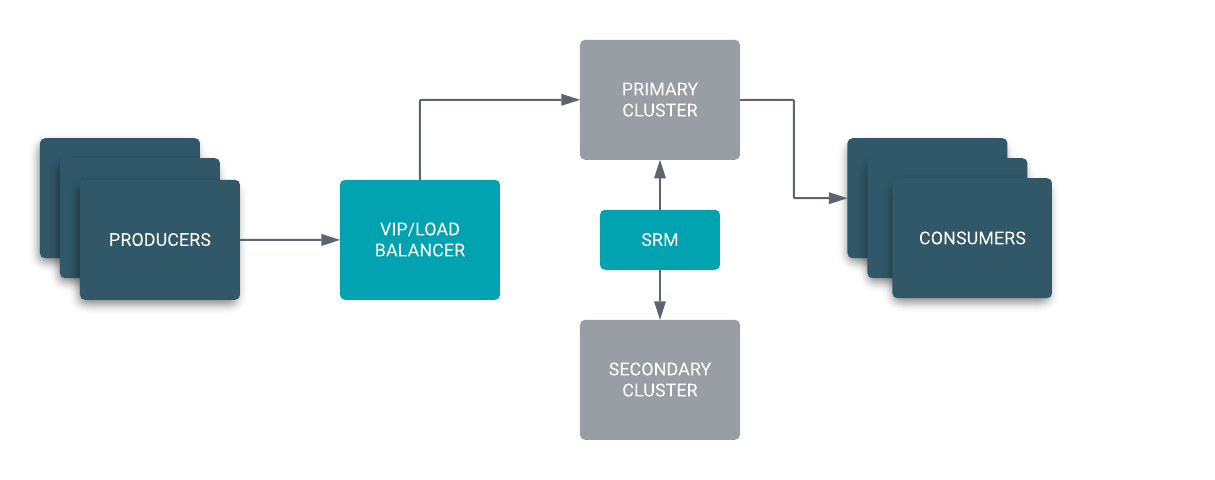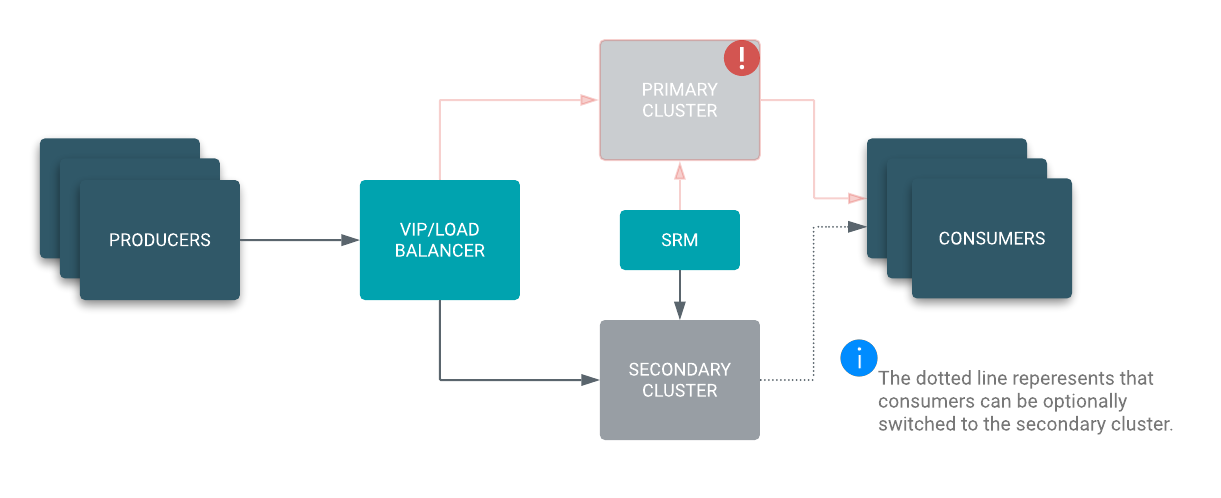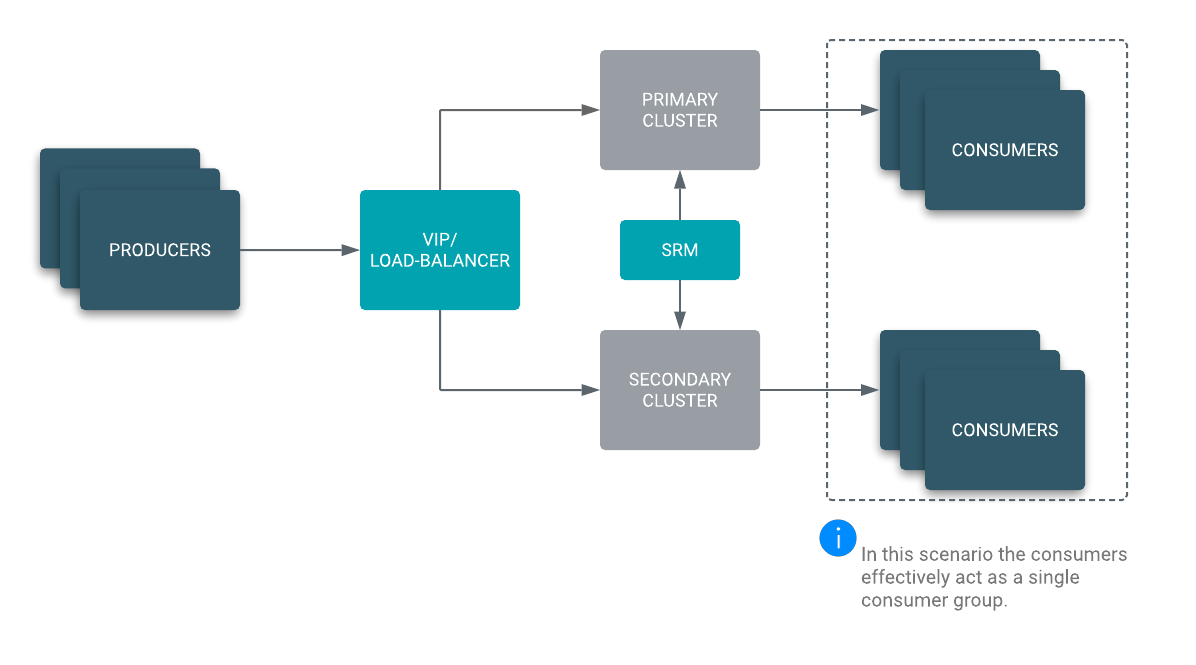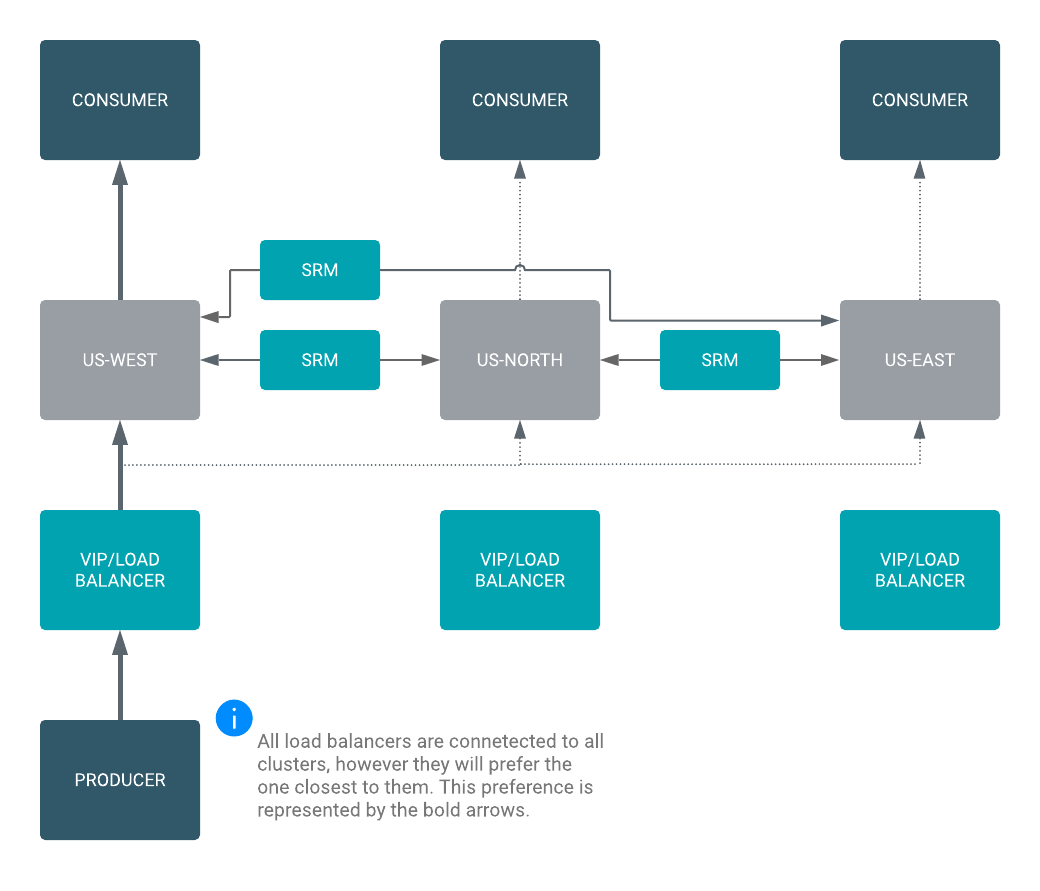Streams Replication Manager use case architectures
You can deploy Streams Replication Manager (SRM) in many different ways and for many different use cases. The following collects example use case architectures where SRM is used to achieve high availability or used for cluster migration.
Highly available Kafka architectures
A highly available Kafka deployment must be able to survive a full single cluster outage while continuing to process events without data loss. With SRM, you can implement highly available Apache Kafka deployments which either follow an Active/Standby or an Active/Active model.
Active/Standby architecture
In an Active/Standby scenario, you set up two Kafka clusters and configure SRM to replicate topics bidirectionally between both clusters. A VIP or load balancer directs your producers to ingest messages into the active cluster from which consumer groups are reading from.

In case of a disaster, the VIP or load balancer directs the producers to the secondary cluster. You can easily migrate your consumer groups to start reading from the secondary cluster or simply wait until the primary cluster is restored if the resulting consumer lag is acceptable for your use case.
While the primary cluster is down, your producers are still able to ingest. Once the primary cluster is restored, SRM automatically takes care of synchronizing both clusters making failback seamless.

Implementing an Active/Standby architecture is the logical choice when an existing disaster recovery site with established policies is already available, and your goals include not losing ingest capabilities during a disaster and having a backup in your disaster recovery site.
Active/Active architecture
In an Active/Active scenario, your producers can be load balanced to either your primary or secondary cluster. SRM is configured to replicate topics bidirectionally between both clusters. What makes this architecture Active/Active is the fact that you now have consumers reading from both clusters at the same time, essentially acting like a cross-cluster consumer group.
In case of a disaster the VIP or load balancer directs the producers to the secondary cluster and the secondary cluster consumer group is still able to process messages. While the primary cluster is down, your producers are still able to ingest and your consumers are still able to process messages. This results in a zero downtime and hands-off failover in case of a disaster. Once the primary cluster is back online, SRM automatically takes care of synchronizing both clusters and your primary consumer group resumes processing messages.

Cross data center replication
Certain applications not only require local high availability within one Data Center (DC) or one Availability Zone (AZ), but have to be highly available across DCs as well. You can use SRM to set up replication between Kafka clusters in different DCs. This results in messages being available to consumers in each of your DCs.
A load balancer directs your producers to the local or closest DC if the primary DC
is down. SRM is configured to replicate topics between all DCs. If you are using
more than two DCs, SRM is configured to create a “replication circle”, ensuring a
single DC failure (for example, us-north in the example below) does
not halt replication between the remaining clusters.

Cluster migration architectures
In addition to high availability use cases, SRM can be used for cluster migration and aggregation scenarios as well.
On-premise to cloud and Kafka version upgrade
If you have an on-premises Apache Kafka cluster that you want to migrate to the cloud, not only do you have to migrate consumers and producers, you also have to migrate topics and their messages to the new cloud-based cluster.
After you have set up replication through SRM, you only need to point your consumers to the new brokers before you can start processing messages from the cloud cluster. This approach ensures that the historical data kept in the on-premises Kafka cluster is migrated to the cloud cluster allowing you to replay messages directly from the cloud without having to go back to your on-premises cluster.

Aggregation for analytics
SRM can be used to aggregate data from multiple streaming pipelines, possibly across multiple data centers (DC), to run batch analytics jobs that provide a holistic view across the enterprise. For aggregation type architectures Cloudera recommends that you use the IdentityReplicationPolicy, which provides prefixless replication. When this replication policy is in use, remote (replicated) topics names are not altered. As a result, you can easily aggregate multiple topics from multiple clusters into one. For more information, see Replication flows and replication policies or Enabling prefixless replication.

